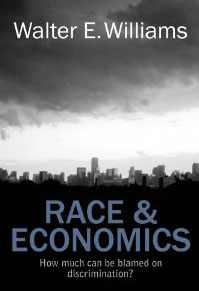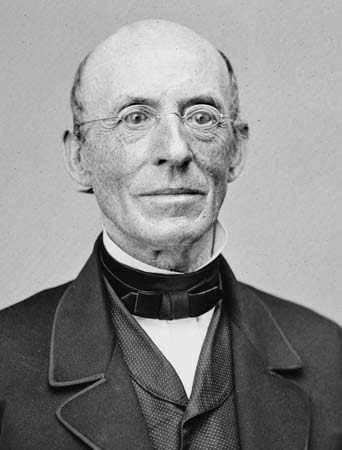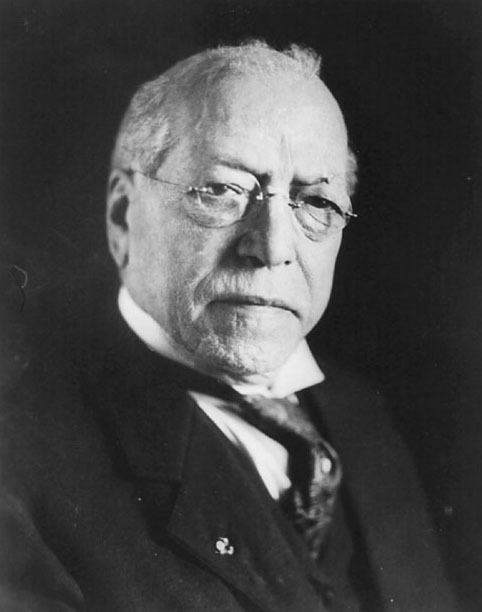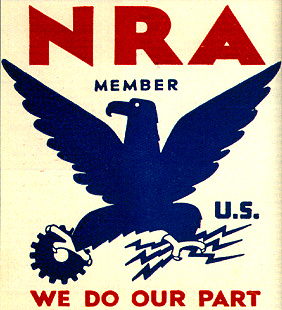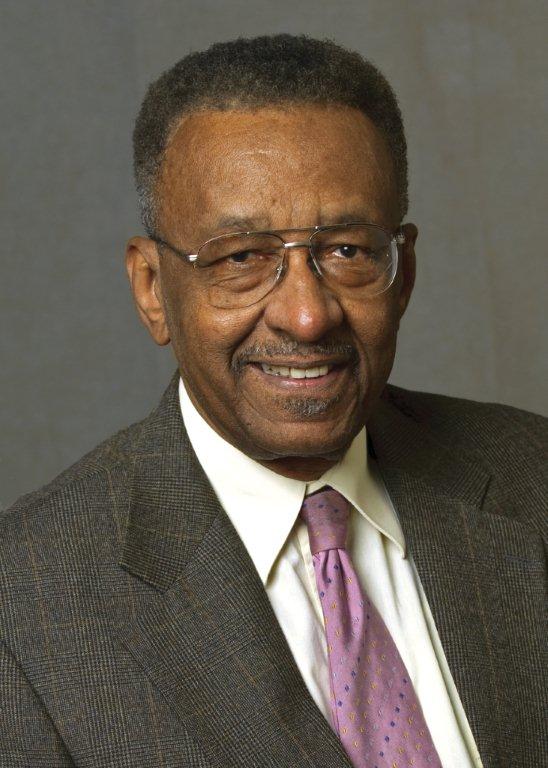Race and Free Markets
Thomas Jackson, American Renaissance, May 11, 2012
Walter E. Williams, Race & Economics: How Much Can be Blamed on Discrimination? Hoover Institution Press, 2011, 174 pp., $14.95 (soft cover)
Walter Williams, who teaches economics at George Mason University, has packed more good sense about race into this slim volume than can be found in shelves of books by lesser writers. His central argument is that racial discrimination is an increasingly threadbare excuse for black poverty and unemployment. He gives many striking historical examples to demonstrate that employers are far more interested in making money than in keeping blacks down, and that capable blacks find work in free markets. What holds back blacks today are self-inflicted handicaps such as widespread illegitimacy and the effects of well-meaning but counterproductive uplift programs. It is a pity this book was published by the Hoover Institution rather than by a trade publisher with real marketing muscle.
This book is also a convincing treatise on the importance of leaving markets alone rather than trying to rig them to help the poor. As Prof. Williams points out, one seemingly permanent problem in Western societies is the desire to do something when it would be better to do nothing:
Decent people promote policy in the name of helping the poor and disadvantaged. Those policies can make their ostensible beneficiaries worse off, because policy is often evaluated in terms of intentions rather than effects. . . . Compassionate policy requires dispassionate analysis. Policy intentions and policy effects often bear no relationship to one another.
There are busybodies who cannot abide inequality, and when they get their hands on power, there is no end to the mischief they may do.
Who is Poor?
First, however, Prof. Williams points out that what passes for poverty is the United States is not the wretchedness we associate with the word. The people whom the census calls poor have the same consumption of protein and vitamins as the middle class. “The average poor American,” adds Prof. Williams, “has more living space than the average nonpoor individual living in Paris, London, Vienna, Athens, and other European cities.” He also notes that although in 1971 only 32 percent of Americans had air conditioning in their homes, by 2001, 76 percent of poor people had air conditioning, and that “by 2001, 97 percent of poor households had a color television set and over half of those, two or more sets.”
What has replaced material poverty is what Prof. Williams calls “behavioral poverty,” or bad choices that lead to poverty. Dropping out of school and unwed motherhood — 70 percent of black children are illegitimate — are obvious examples. It is absurd for liberals to persist in claiming illegitimacy is a “legacy of slavery.” Prof. Williams points out that even under slavery, a majority of black children lived with both parents, and in 1925, 85 percent of black households in New York City had both parents present.
Welfare has done great harm to the poor, and especially to blacks. It was already known in the 1970s that every increase in welfare payments resulted in a drop of 80 cents in labor earnings. A study from the same era found that a 50 percent increase in welfare payments caused a 43 percent increase in illegitimate births. When welfare eases the pain of shiftlessness, the country gets more of it.
In 1959, 31.5 percent of heads of poor households worked year-round, but by 1989, only 16.2 percent bothered to work. As Prof. Williams notes, many people on welfare admit that it would be easy to find a low-paying job, but they don’t work because they can get by on the dole.
Regulations or Discrimination?
Prof. Williams demolishes the perpetual liberal lament that blacks are poorer than whites because they face “racism” at every turn. He argues that few employers indulge racial preferences in hiring if it means paying a higher wage.
This has been clear since at least the time of slavery. New Orleans had the highest proportion of free blacks of any city in the ante-bellum South, and many learned trades and prospered. Travelers wrote with astonishment of “Negro artisans being served by Irish waiters and free Negro masons with Irish hod carriers.” These free blacks sold their services mainly to whites, who probably did not hold blacks in high regard but hired them if they did good work at reasonable rates.
Even William Lloyd Garrison recognized the power of markets. He wanted abolition but did not want special treatment for freedmen because he thought they would not need it:
Place two mechanics by the side of each other, one colored and one white, and he who works the cheapest and best will get the most custom. In making a bargain, the color of the man will never be consulted.
This was, indeed, the case for many “self-hiring” slaves. In return for regular payments to their masters, they were free to find work and support themselves. If they knew a trade, they could live far better than most slaves and pay their masters what amounted to a good return on their price as a slave. White tradesmen resented the competition, and in North Carolina they got the legislature to pass a law in 1831 to fine any owner who let his slave compete in the market. In Connecticut, free blacks undercut white laborers, who also petitioned the authorities to bar blacks from certain professions.
After emancipation, it took Jim Crow laws to keep blacks out of the trades in the South. White workers could not count on white bosses to give them work if blacks were willing to do the job for a little less. As Prof. Williams notes, the most powerful weapon in the fight against hiring discrimination is “the right to work for lower wages.”
The purpose of labor unions, of course, is to deny non-members “the right to work for lower wages.” Unions can keep wages high because they have a monopoly on the trade that keeps out competitors. This hurts non-members of all races, but many unions deliberately kept out non-whites. That is why Frederick Douglass, Booker T. Washington, and W.E.B. DuBois were lifelong foes of unions. As Marcus Garvey said, “The only convenient friend the Negro worker or laborer has in America at the present time is the white capitalist.”
The famous labor leader Samuel Gompers cared about the welfare only of whites, noting that “Caucasians are not going to let their standard of living be destroyed by Negroes, Chinamen, Japs, or any other.” He was coauthor of a pamphlet called “Some Reasons for Chinese Exclusion: Meat vs. Rice, American Manhood against Coolieism — Which Shall Survive?”
White solidarity was common in the labor movement. In 1909 there was a strike against the Georgia Railway in which the Brotherhood of Locomotive Firemen demanded that blacks be excluded from all railroad jobs. The arbitration board denied that request but ruled that blacks and whites should be paid the same wage. The union was happy because the incentive for hiring lower-wage blacks had been removed.
Prof. Williams argues that before the era of minimum wages, heavy unionization, and government meddling in wages, an unfettered market meant blacks were more likely to have work than whites. In 1910, he reports, 71 percent of blacks over age 9 had work compared to 51 percent of whites, and blacks enjoyed higher employment rates until Congress began to set wages on public works programs.
For Prof. Williams, the watershed event was the Davis-Bacon Act of 1931, which required the federal government to hire labor at “prevailing” wages. These are essentially union wages, and are 15 to 40 percent higher than the free-market wage. Since contractors were forced to pay high wages, they hired skilled labor, which tended to be white. 1930 was the last year when the black unemployment rate was lower than the white rate.
The National Recovery Act, which was passed during the Depression in 1933, required that certain industries pay the union wage, which had the same effect of driving away low-skill, low-wage black labor. The black press called the NRA such names as Negro Run Around, Negroes Rarely Allowed, Negroes Robbed Again, and Negro Removal Act, and rejoiced when the act was found unconstitutional in 1935.
Prof. Williams cites a more recent example of well-intentioned regulation hurting blacks. A company that manages housing for the Department of Housing and Urban Development had planned to pay neighborhood men — most of whom were black — $5.00 an hour to remove salvageable material from public housing that was going to be fixed up. Davis-Bacon required that the workers be paid $14.00 an hour, which meant that it made sense to hire skilled workers, most of whom were white.
Until 1979, the trucking industry was regulated, and wages were unnaturally high. After deregulation, blacks were able to offer their services at lower rates, and were three times more likely to be owner-operators than before deregulation. Prof. Williams argues that eliminating government interference is the best way to help blacks and other unskilled workers get jobs, because they can compete on price — and it works without the rancor of quotas or racial preferences.
Licensing
Prof. Williams has particular scorn for the practice of licensing. Most of the time he sees it as nothing more than a legal means of keeping competitors out of a profession and raising prices. In some places, it is necessary to get a license to be a barber, fortune teller, tree surgeon, or septic tank cleaner, and plumbers, electricians, and taxi drivers almost always need licenses. The theory is that licenses keep frauds and quacks out of the trade, but according to Prof. Williams:
[M]ost licensure laws are the result of intense lobbying by incumbents, not of consumers demanding more protection from incompetent or unscrupulous practitioners; (2) when incumbents in an unlicensed trade lobby for licensing (or when those in one already licensed lobby for higher entry requirements) they virtually always seek a “grandfather” clause that exempts them from meeting the new requirements.
Most of the time, the people who write licensing tests are members of the profession who have no incentive to let in others. When times are tough, they routinely raise the passing grade to keep out fresh talent.
All states require cosmetologists to be licensed, but Prof. Williams thinks this is ridiculous. Cosmetologists simply do for others what most women do for themselves at home, and he thinks there should be no barriers to entering the trade. Skillful practitioners will get customers and bunglers will not.
Licensing has other costs. One study found that the tougher the standards for electricians’ licenses, the higher the number of electrocutions in the home. This is because high license requirements mean few electricians are in the profession and they can charge high rates. This means more people try to do electric work themselves and grab the wrong wires.
Prof. Williams summarizes the effects of licensing:
By insisting on stiff requirements for entry, licensing provides high-quality services for high-income people. But people with low incomes, who cannot afford to pay the higher prices, are forced to do without the services, do the work themselves, or rely on low-priced, unlicensed charlatans. . . .
A spectrum of quality, from high to low, is consistent with the optimal stock of goods and services. Being forced to purchase a higher-quality good or service, when a lower-quality would suffice or is what the customer wants, hurts consumers economically.
Prof. Williams points out that it is possible to provide the consumer with objective information about tradesman competence without restricting entry. A plumbing test, for example, could be open to anyone, but there would have to be a foolproof way of making sure the grades were available to the public. That way, people who insisted on having work done by plumbers who scored 98 or higher could pay more for premium service. People who were satisfied with someone who scored 70 could pay less.
The fees people pay for taxi medallions are an indication of just how much the public is being gouged. In 2007, a New York City medallion sold for $603,000. This means the buyer figured he could earn back that much money by charging the high, regulated fares set by the taxi commission. If anyone with a car could operate as a taxi driver, fares would be significantly cheaper — and a medallion would have no value at all. Prof. Williams notes that there is such a high demand for reasonably priced car service that there are an estimated 30,000 gypsy caps in New York, but they operate illegally.
In order to set up a licensing requirement, members of the trade have to persuade some government body to pass a licensing law, but, as Prof. Williams notes, this is an ancient practice: “People have always sought to use laws to accomplish what they cannot accomplish through voluntary, peaceable exchange.”
The racial angle, of course, is that any barrier to entering a profession will keep out the poorest and the worst trained, who are likely to be blacks.
Minimum-wage laws have the same effect. Prof. Williams points out that it is young blacks who are most likely to be thrown out of work when a rise in the minimum wage makes their job uneconomical. It makes sense to hire a skilled worker who charges $20.00 an hour but who is just as productive as a three minimum-wage workers who get $7.00 an hour. If the less productive workers could legally charge $6.00 it would make more sense to hire them. Minimum-wage laws are another example of depriving people of “the right to work for lower wages.” In the 1940s and 1950s, black teenagers were more likely than white teenagers to have jobs. That was before national minimum-wage laws.
Prof. Williams calls this yet another perverse result of good intentions:
Before the do-gooders “helped,” they forgot to ask, why would anyone work ten hours per day for the paltry sum of $2 or $3 an hour? Would they have selected such a job if they had superior alternatives?
Not being able to take below-minimum-wage work has another disadvantage:
Early work opportunities provide much more than [pocket money]: important insights on how to find a job and to adopt proper attitudes towards both punctuality and respect for supervision in the workplace. Lessons of that sort learned on any job help make a young person a more valuable and successful worker in the future.
Prof. Williams argues that if people are really worried about blacks getting jobs, they should let markets take their course:
The broad solution to exclusion is for the U.S. Supreme Court to interpret the right to work as it now interprets the right to speech. The Court has all but said that there is no compelling state reason for limiting freedom of speech. Similarly, from a moral point of view, there are very few compelling state reasons for limiting one’s freedom to work.
Rational Discrimination
Race is a pretty good indicator of test scores, worker reliability, athletic ability, crime rates, and many other things, so it is foolish to ignore it. A particular black may be smart and hard working, but it takes time for an employer to find that out; for some jobs it may be more efficient to hire on race alone. This is racial profiling, of course, and Prof. Williams considers it reasonable. Blacks may be annoyed if a taxi does not pick them up or if the pizza company refuses to deliver in their neighborhood, but that is the fault of criminal blacks who make that kind of decision-making rational.
Race is also an indicator of the likelihood of having certain diseases and that certain treatments may work better than others. If it is reasonable to play the racial odds in medical treatment, it should always be reasonable to play the odds.
Prof. Williams points out that it is normal for chain stores to charge higher prices in black areas. In white neighborhoods, managers can put plants and bags of fertilizer outside the store without fear that they will be stolen. They can display merchandize by the exits, and no one will run off with it. Stores in black areas cannot use space in the same efficient way, so for that reason alone they must charge higher prices.
Blacks have demonstrated against “price gauging” in their neighborhoods, and pressured stores to sell at the same prices as in the suburbs, but that just drives merchants away. If store keepers had been making boom-time profits, someone else would open up shop and do the same. If there are no supermarkets in the ghetto it is because profits cannot be made there.
Prof. Williams also sees the racial element in the sub-prime mortgage crisis. There was tremendous government pressure to lend to non-whites who had bad credit, so it was predictable that many borrowers would be charged a risk premium and that many would default. If bankers had not been forced to abandon traditional lending standards, the collapse might have been avoided.
Prof. Williams defends all forms of discrimination. Every free choice is discrimination; wine drinkers discriminate against beer. It is therefore wrong to issue special prohibitions against racial discrimination. He explains that a woman need give no reason for refusing to associate with a man (or vice versa), so whites should be free to refuse to associate with blacks (and vice versa). “From an objective analytical point of view,” he writes, “there are no conceptual distinctions between racial preferences and preferences for other objects of desire.”
Discrimination is not without cost, however. Whites who want to live with whites have to pay more for housing than whites who are willing to live with blacks, but this preference should not be condemned.
The problem of capitalism
Prof. Williams is certainly right to argue that capitalism does not care about race. Many employers who would never socialize with blacks nevertheless hire them if they work at reasonable rates. During apartheid, there were laws that banned blacks from certain mining trades. South African mining companies routinely broke those laws, and paid fines for hiring competent blacks. The profit motive was more powerful than racial solidarity.
Some whites who value racial solidarity therefore oppose free markets (and free association), but they should pick their enemies carefully. Attacking capitalism is a strange way to foster racial consciousness. In fact, many of today’s market distortions are deliberate assaults on white solidarity. “Affirmative action,” anti-discrimination laws, the promotion of “diversity” over merit, busing, racial quotas, and deliberate establishment of Section 8 housing in white neighborhoods are all government interventions that disadvantage whites and break up white communities.
It would be good for whites and good for the country if these tyrannies could be abolished. It would be good for the country if more people paid attention to Walter Williams.

